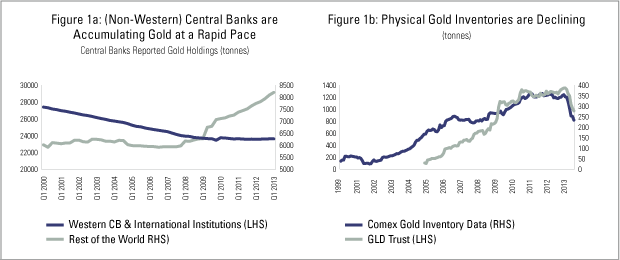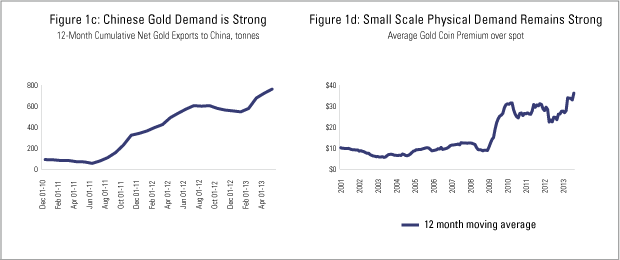
The recent decline in gold prices and the drain from physical ETFs have been interpreted by the media as signaling the end of the gold bull market. However, our analysis of the supply and demand dynamics underlying the gold market does not support this thesis.
For example, Non-Western Central Banks have been increasing their holdings of gold at a very rapid pace, going from 6,300 tonnes in Q1 2009 to more than 8,200 tonnes at the end of Q1 2013 (Figure 1a) while physical inventories are declining (Figure 1b) (or being raided, as we argued in the May 2013 Markets at a Glance)1 and physical demand from large (Figure 1c) and small (Figure 1d) scale buyers remains solid.


In previous articles we have argued that Western Central Banks have been filling the supply gap to satisfy the demand for physical gold.2 As shown in Figure 1a above, the official amount of gold held in the Western Central Banks and international institutions like the IMF has been steadily declining since 2000, only to stabilize at around 23,500 tonnes since 2008.
…….read more HERE












